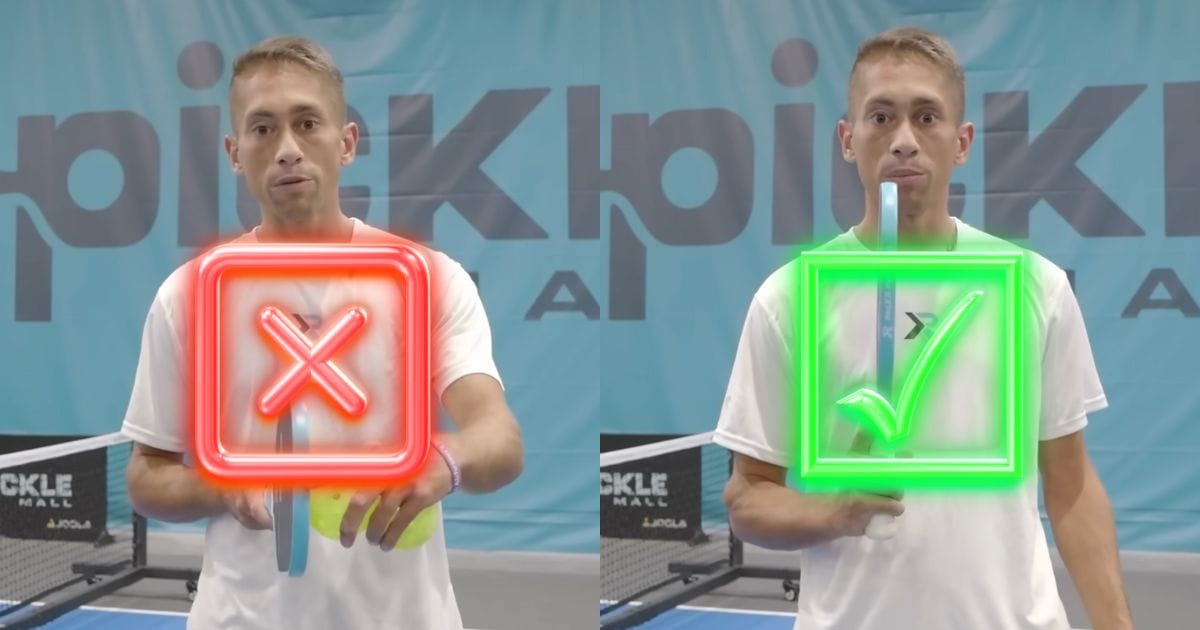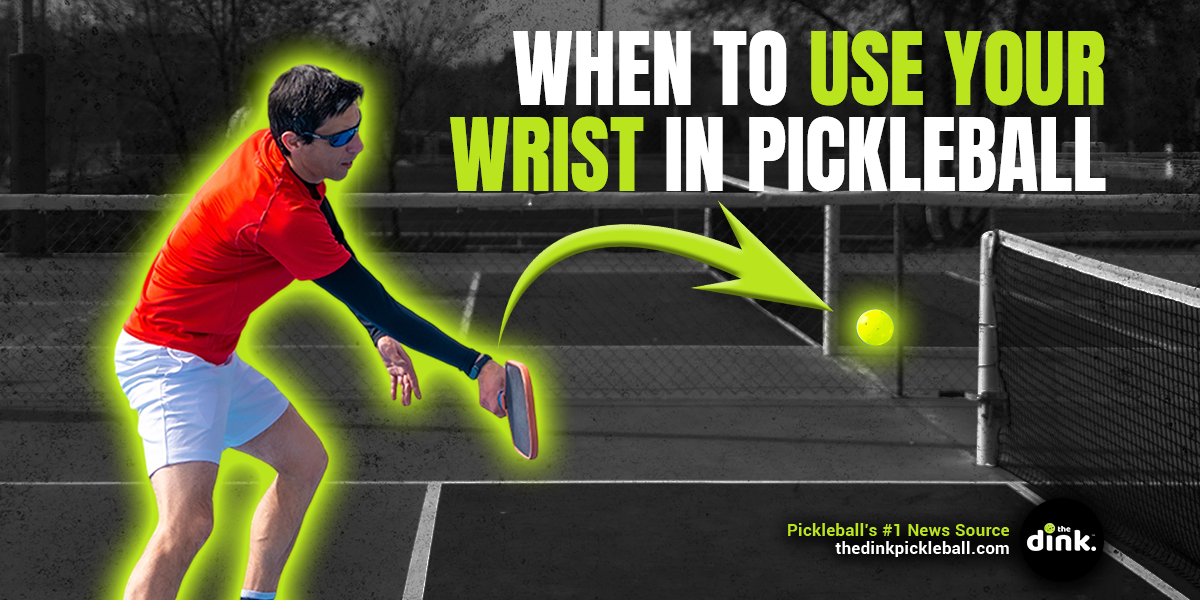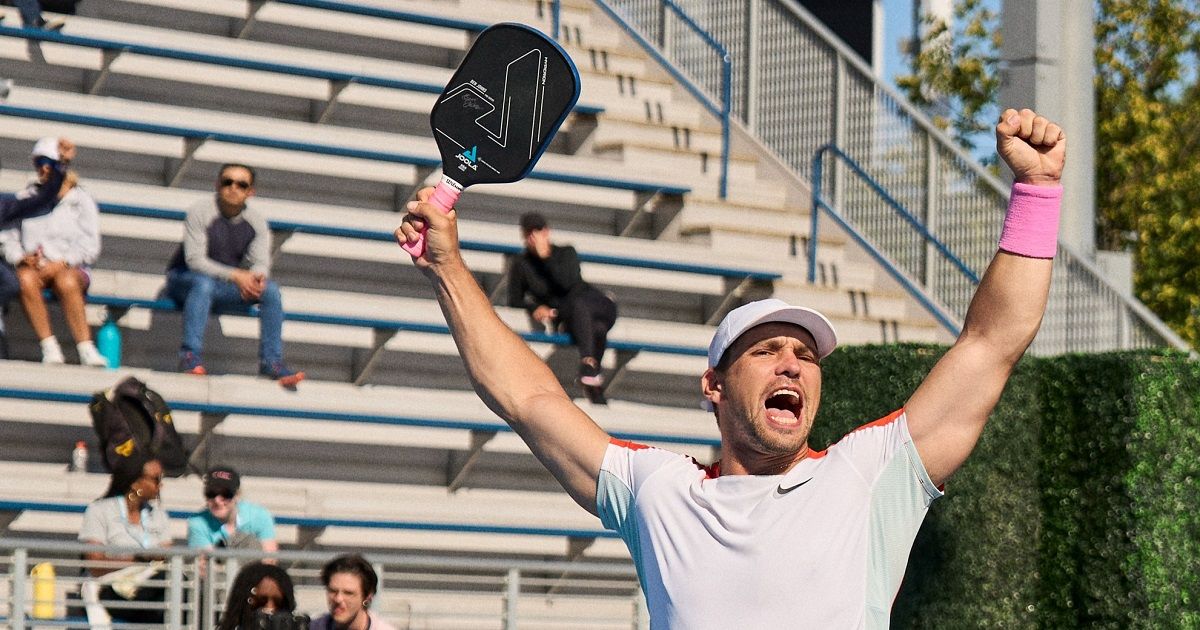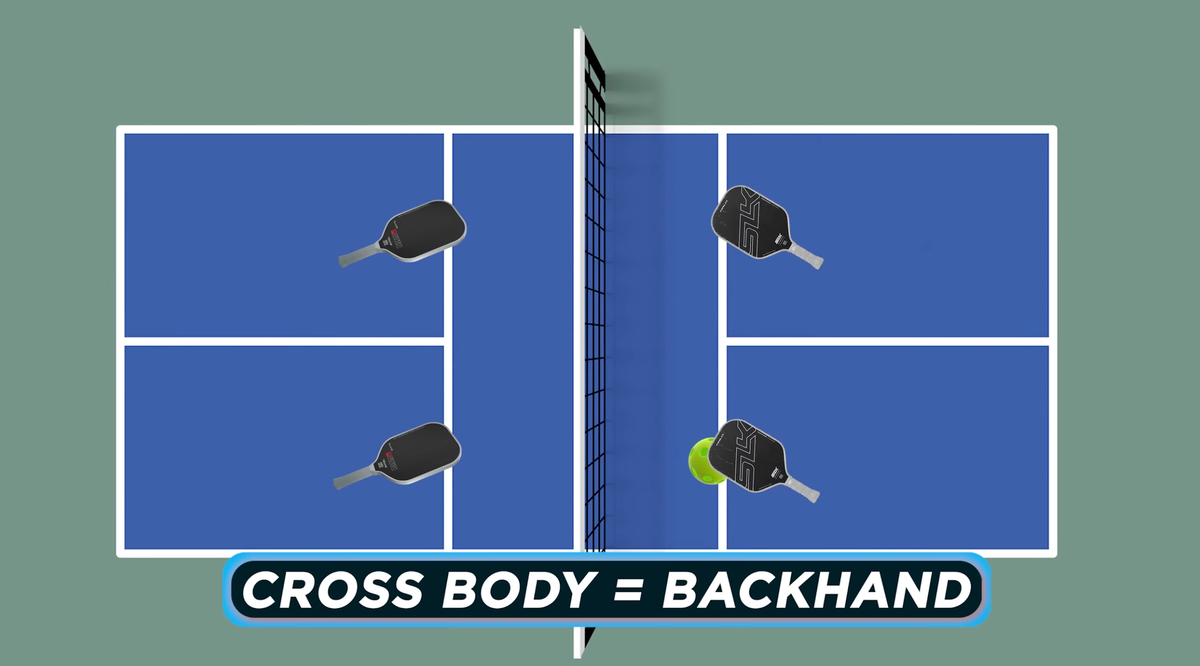As much as the game has changed over the last several years, one constant remains the same: the dink.
No, not The Dink.
Though, we are your constant source for everything pickleball.
The actual dink shot you use (or at least should use) in your pickleball game. In a recent YouTube instructional video, pickleball pro and PicklePod co-host Zane Navratil shares what he's learned from hitting a million dinks throughout his career.
Hitting 1 MILLION DINKS Taught Me THIS
As a seasoned pickleball player with over a decade of experience, Zane Navratil seen the sport evolve in many ways. Amidst these changes, one classic element…
 YouTube
YouTube

Top Five Dink Tips
As explained, there are five key tips to mastering the dink in pickleball:
- Ready position
- Strong wrist
- Paddle in your vision
- Offense vs. Defense
- Do the bare minimum
Ready Position
Many amateurs (and coaches) get the ready position wrong. Instead of favoring one side of the paddle over the other (e.g., the backhand), you want your ready position to be neutral.
Neutral means that when you look down at the paddle, you see the edge of your paddle, not one side of the face or the other.
The other part of a good ready position is having your paddle high. While high can be subjective, generally, we mean your paddle hand should be above the waist.
How to improve your ready position
To work on this, Zane suggests the "Ball Tap Drill." In this drill, you would dink like normal but have a pickleball in your offhand. Every time you dink, you want to tap the face of your paddle with the ball in your hand.
This provides a visual and audio queue and reminds you to get your paddle back to a great ready position every time.
Your Ready Position is Costing You Points
The ready position is a boring topic, but wouldn’t you want to use any and all strategies in order to win more points?
 The Dink PickleballThe Dink Media Team
The Dink PickleballThe Dink Media Team

Strong Wrist
If your wrist is weak, there's a great chance the paddle will rotate or twist when you strike the ball. This causes mishits and errant shots. Instead, you want your wrist to be strong while you wait for your next shot.
How to ensure a strong wrist
Hold your paddle out in front of you and let your wrist go limp. Now, try pulling the top of the paddle toward your face without moving your arm. When someone slaps your paddle, it should stay nice and firm.
Using Too Much Wrist Action in Your Pickleball Mechanics Is Costing You Points
Using too much wrist in your pickleball game could be causing you to hit more wayward shots. We’ve got the solution with the help of Zane Navratil.
 The Dink PickleballJason Flamm
The Dink PickleballJason Flamm

Paddle in your vision
Big swings lead to big mishits in pickleball. Any time your paddle leaves your field of vision, you've taken too big of a swing. Instead, you want to make sure that your paddle stays in your vision the entire time, especially when dinking.
How to keep your paddle in your vision
To work on this, go through your dinking and use your peripheral vision to keep tabs on your paddle. Don't worry so much about the dink and whether it's good. The point of this exercise is to watch your paddle and keep it within sight.
If you lose track of your paddle, your swing is too big. Adjust accordingly.
Offense vs Defense
Something unique to pickleball is that we play offense and defense almost simultaneously. There is no obvious "possession" that tells you whether you should be trying to score or keep the other team from scoring.
Because of this, players can get confused as to whether or not to use an offensive or defensive dink.
A defensive dink is something like a reset ball toward the middle.
An offensive dink is more like a push dink that pulls your opponent out wide.
Transitioning Between Defense and Offense in Pickleball
Transitioning from defense to offense happens instantly in pickleball -- here are some tips.
 The Dink PickleballThe Dink Media Team
The Dink PickleballThe Dink Media Team

How to learn whether you're on offense or defense
Mostly, this skill comes with experience. But here are a few ways to figure out whether you are on offense or defense:
Offense
- You're on balance and behind the ball
- You're standing right at the kitchen line
- Your partner is also in a good position
Defense
- You're off balance, or you've been pushed out wide
- You've been pushed off the kitchen line, and you're trying to get back
- Your partner is in a compromising position
Sometimes, we need to dink to keep the point going. Other times, we want to dink to set up a winning shot against our opponents. Learning when to do each of those things and how they change throughout almost every dink rally is essential.
Do the bare minimum
The annoying cousin to a big swing is doing way too much in your swing. Many players make unnecessary motions when dinking, and they may not realize that it is absolutely killing their consistency.
How to do the bare minimum
Practice moving your paddle as little as possible. Again, don't worry about the quality of your dinks right now. Simply put down your paddle face and push the dink over the net.
Do this repeatedly until you notice consistency in your dinks and how easy it is to develop that consistency.
This exercise is about learning how a tiny bit of power and motion can help you hit dinks consistently.
Anuncie Aqui / Advertise Here
Sua marca para o mundo Pickleball! / Your brand for the Pickleball world!

 English
English  Spanish
Spanish  Portuguese
Portuguese  German
German  Italian
Italian  Japanese
Japanese  French
French  Polish
Polish  Russian
Russian  Netherlands
Netherlands  Hungarian
Hungarian  Turkish
Turkish  Videos
Videos 








 English (US) ·
English (US) ·  Portuguese (BR) ·
Portuguese (BR) ·